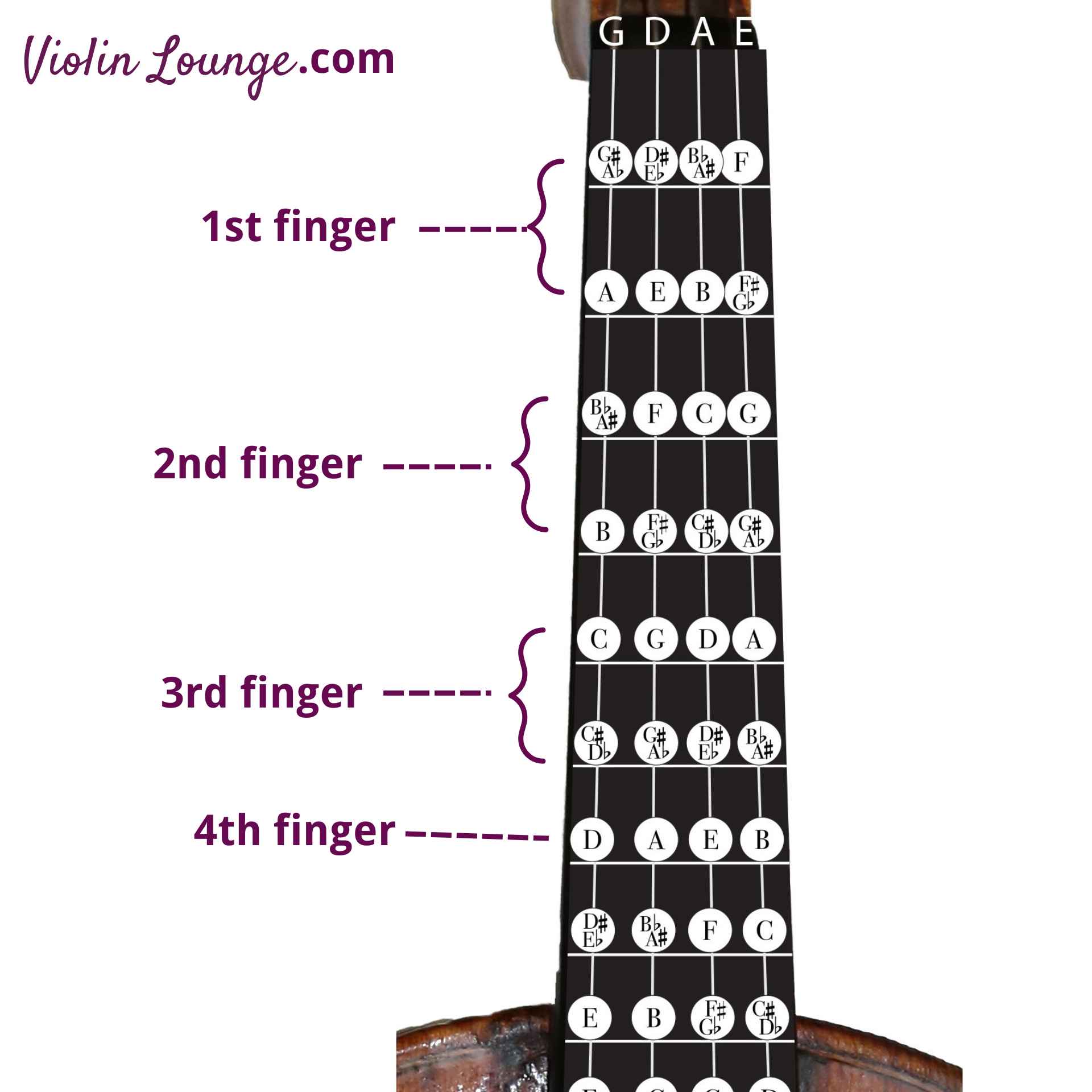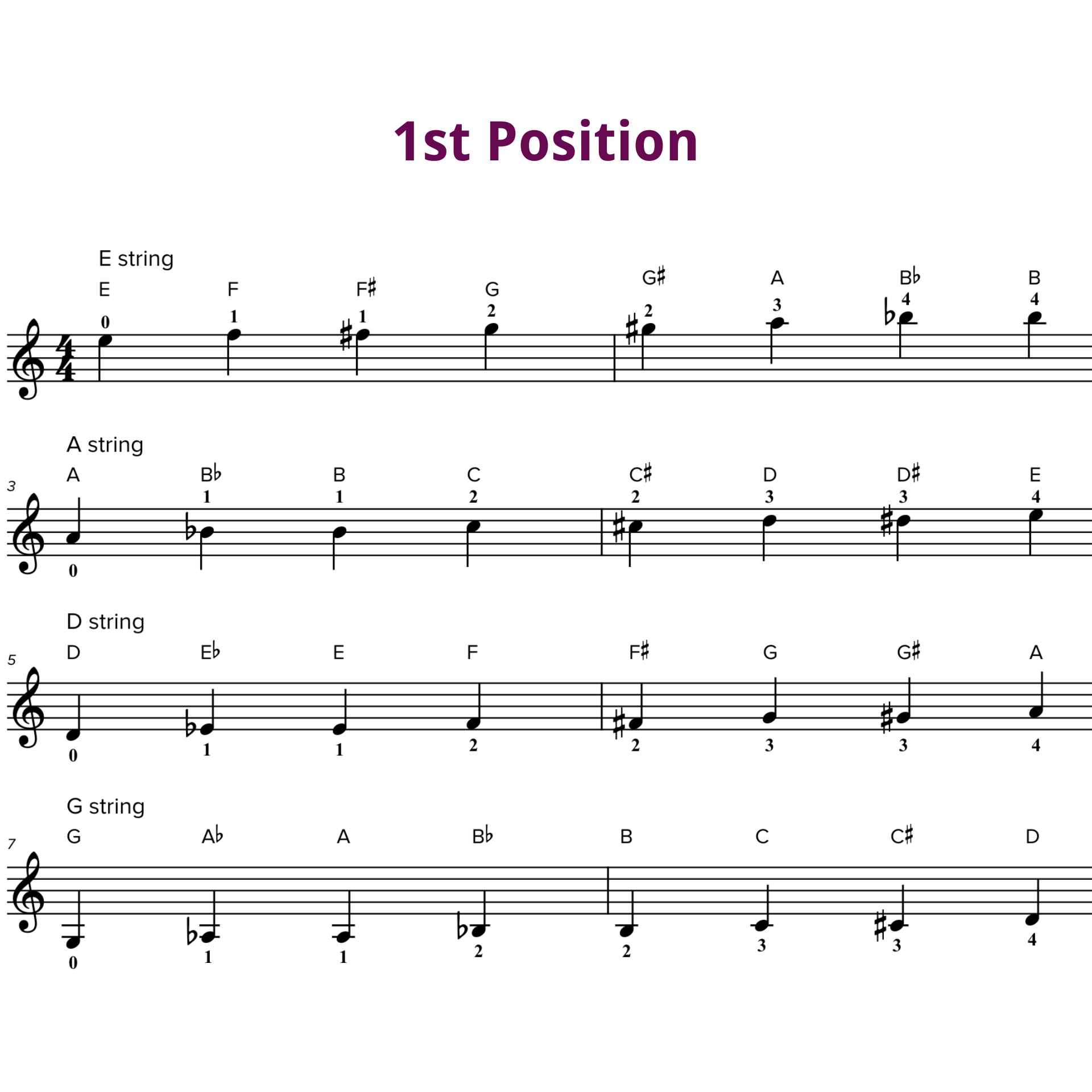All Violin Notes in the First Position for Beginners
Find all the notes on the violin as a beginner violinist with this finger chart and sheet music
If you are just getting started on violin, it may seem intimidating to watch videos of great violinists and watch their fingers rapidly move up and down the instrument. You can and will learn how to do this, but for now take comfort in knowing that there are many pieces you can play just in first position. To do that though still requires a firm basis in note reading, accidentals, and changing between hand frames. In this article, we’ll go over all the notes in first position, how to know which finger to use, and clear up some common confusions such as high 2’s vs. low 2’s and how to treat enharmonic pitches.
First Position Violin Finger Chart
To start off, here is a chart of all the notes in first position that we will reference throughout the article:

High Vs. Low
As you can see, there are multiple positions for each finger. We differentiate between the positions by calling them “low”, “normal”, or “high”. If you have finger tapes, your tapes are on normal 1, high 2, normal 3, and normal 4. There is actually no such thing as normal 2, because 2 will either touch 1 or 3. So we just refer to these as low or high 2. Remembering which to use is a big challenge for beginners, so look carefully at the fingering chart.
Fingering Enharmonics
This fingering chart shows low 1, normal 1, low 2, high 2, normal 3, high 3, and four. Are there other combinations? Absolutely. For example, instead of playing D#/Eb with high 3, you could use a low 4. There are all kinds of ways to change things up, but the chart gives everything you need for knowing where every note in first position is.
That being said, it is important to think your fingerings through carefully when dealing with enharmonic pitches. An enharmonic is a note that could be written two different ways in the music, but is technically the same pitch. I say “technically” because on violin it is possible to tune them differently! For example, D# and Eb on a piano are the exact same key. On violin, however, minute adjustments can be made to make the pitch more accurate in its tonal context. There isn’t an easier way to explain this so here goes: Eb should be slightly lower than D#. When choosing fingerings, follow this general rule: Use lowered fingers for flats (such as low 4 in this case) and raised fingers for sharps. There will be situations where this rule will not work, but it’s a good place to start for intonation.
All the First Position Violin Notes
To help with the chart, here are all the notes listed out in order by string, as well as the notes on the staff:
G string violin notes in the first position
G: open G
G#/Ab: low 1
A: normal 1
A#/Bb: low 2
B: high 2
C: normal 3
C#/Db: high 3
D: normal 4
D string violin notes in the first position
D: open D
D#/Eb: low 1
E: normal 1
F: low 2
F#/Gb: high 2
G: normal 3
G#/Ab: high 3
A: normal 4
A string violin notes in the first position
A: open A
A#/Bb: low 1
B: normal 1
C: low 2
C#/Db: high 2
D: normal 3
D#/Eb: high 3
E: normal 4
E string violin notes in the first position
E: open E
F: low 1
F#/Gb: normal 1
G: low 2
G#/Ab: high 2
A: normal 3
A#/Bb: high 3
B: normal 4
Join my FREE beginner violin course
I take you from scratch step by step to your first violin concerto including 40 videos, sheet music and violin tabs.

Hi! I'm Zlata
Classical violinist helping you overcome technical struggles and play with feeling by improving your bow technique.
Sheet Music of All Violin Notes in the First Position
Notice that the sheet music does not include all the enharmonic pitches, but they are provided on the fingerboard chart.

Would you like to start playing the violin?
Take my free beginner course right here!


Really Nice! To see all the notes played in first position. For now I am practicing a en d major with three fingers since I am an absolute beginner (playing for 6 weeks)
Glad it’s helpful!
How can I get a poster of the letter board first position?
You can find my poster with all notes right here.